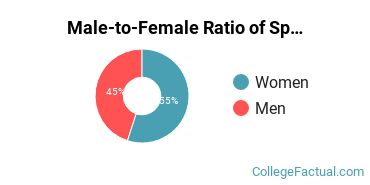 by our College Data Analytics Team
by our College Data Analytics TeamSpecial Products Marketing Operations is a concentration offered under the specialized sales, merchandising and marketing major at Saint Joseph’s University. We’ve pulled together some essential information you should know about the master’s degree program in special products marketing operations, including how many students graduate each year, the ethnic diversity of these students, and more.
If there’s something special you’re looking for, you can use one of the links below to find it:
During the 2019-2020 academic year, part-time graduate students at St. Joe’s paid an average of $0 per credit hour. No discount was available for in-state students. The average full-time tuition and fees for graduate students are shown in the table below.
| In State | Out of State | |
|---|---|---|
| Tuition | $17,802 | $17,802 |
St. Joe’s does not offer an online option for its special products marketing operations master’s degree program at this time. To see if the school offers distance learning options in other areas, visit the St. Joe’s Online Learning page.
About 55.0% of the students who received their Master’s in special products marketing operations in 2019-2020 were women. This is about the same as the countrywide number of 55.0%.

Of those graduates who received a master’s degree in special products marketing operations at St. Joe’s in 2019-2020, 10.0% were racial-ethnic minorities*. This is about the same as the nationwide number of 10%.

| Race/Ethnicity | Number of Students |
|---|---|
| Asian | 0 |
| Black or African American | 1 |
| Hispanic or Latino | 1 |
| Native American or Alaska Native | 0 |
| Native Hawaiian or Pacific Islander | 0 |
| White | 17 |
| International Students | 0 |
| Other Races/Ethnicities | 1 |
You may also be interested in one of these majors related to special products marketing operations.
| Related Major | Annual Graduates |
|---|---|
| Other Specialized Merchandising, Sales, and Marketing Operations | 24 |
View All Special Products Marketing Operations Related Majors >
*The racial-ethnic minorities count is calculated by taking the total number of students and subtracting white students, international students, and students whose race/ethnicity was unknown. This number is then divided by the total number of students at the school to obtain the racial-ethnic minorities percentage.
More about our data sources and methodologies.